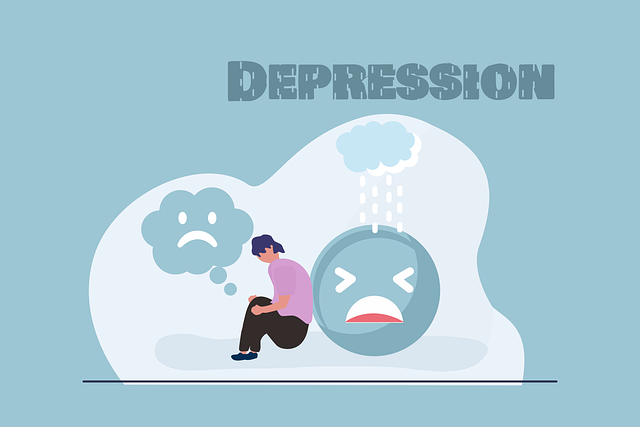Positive thinking is a scientifically validated strategy for enhancing mental well-being, reducing anxiety and depression symptoms, and boosting resilience, as shown by practices like Centennial Depression Therapy. Incorporating positive psychology into education improves self-esteem and prevents depressive episodes. Integration of exercises like Mental Wellness Journaling in Centennial Depression Therapy empowers individuals to actively engage with their thoughts, challenge negative patterns, and cultivate optimism, complementing traditional therapy. Effective implementation requires strategic approaches such as mindfulness meditation and journaling for lasting benefits, improving emotional intelligence and life satisfaction.
Positive thinking exercises have emerged as a powerful tool in enhancing mental well-being, particularly within the context of Centennial Depression Therapy. This article delves into the transformative power of cultivating optimism and its profound impact on mental health. We explore practical strategies for integrating positive thinking exercises into therapeutic practices, offering insights into effective implementation and showcasing long-term benefits. By understanding these techniques, healthcare professionals can empower individuals to navigate depression with renewed hope and resilience.
- Understanding Positive Thinking and its Impact on Mental Health
- Integrating Positive Thinking Exercises into Centennial Depression Therapy
- Strategies for Effective Implementation and Long-term Benefits
Understanding Positive Thinking and its Impact on Mental Health

Positive thinking is a powerful tool that can significantly influence mental health and overall well-being. It involves cultivating optimistic attitudes, focusing on personal strengths, and interpreting experiences in a constructive light. This shift in perspective has been shown to reduce symptoms of anxiety and depression, which are prevalent issues globally. By engaging in regular positive thinking exercises, individuals can enhance their resilience and cope more effectively with life’s challenges.
This concept is not merely a philosophical approach but a practical strategy backed by scientific research. Many mental health professionals incorporate positive thinking techniques into therapy sessions, particularly in treating conditions like Centennial Depression Therapy. Moreover, integrating such practices into educational programs can empower people to take charge of their mental state and promote Self-Esteem Improvement. Effective Mental Health Education Programs Design often include positive psychology components to help individuals build a more resilient mindset, thereby preventing depressive episodes and fostering overall mental health.
Integrating Positive Thinking Exercises into Centennial Depression Therapy

Integrating Positive Thinking Exercises into Centennial Depression Therapy offers a promising approach to enhancing mental health awareness and fostering inner strength development. By incorporating practices like Mental Wellness Journaling Exercise Guidance, individuals can actively engage with their thoughts and emotions, cultivating a more optimistic outlook over time. This strategy not only complements traditional therapy but also empowers individuals to take an active role in their healing process.
Centennial Depression Therapy benefits from these exercises by providing structured tools to challenge negative thought patterns and promote resilience. Mental Wellness Journaling Exercise Guidance encourages individuals to reflect on their day, acknowledging both challenges and victories, thereby shifting focus towards personal growth and strengths. This proactive mental wellness journaling exercise can be a game-changer in the fight against depression, helping individuals build a more positive mindset and improve overall well-being.
Strategies for Effective Implementation and Long-term Benefits

Implementing positive thinking exercises effectively requires a strategic approach to ensure lasting benefits for mental well-being. One powerful strategy is to integrate these practices into daily routines, making them an integral part of one’s life. This could involve setting aside dedicated time each day for mindfulness meditation or journaling, which allows individuals to reflect on their thoughts and emotions in a constructive manner. By consistently applying these techniques, people can develop a more positive mindset over time, fostering better emotional intelligence.
The long-term advantages of such exercises are significant, particularly in combating conditions like Centennial Depression Therapy. Positive thinking interventions have been shown to reduce anxiety relief and stress reduction methods, helping individuals manage challenging situations with greater resilience. Over time, these practices can enhance overall life satisfaction and foster a sense of optimism, leading to improved mental health outcomes and a higher quality of life.
Positive thinking exercises, when seamlessly integrated into Centennial Depression Therapy, offer a powerful tool for enhancing mental well-being. By focusing on cultivating optimism and reframing negative thoughts, individuals can experience significant improvements in their mood and overall quality of life. Through consistent practice, these strategies promote long-term benefits, fostering resilience and a more positive outlook. This approach not only complements traditional therapy but also empowers individuals to take an active role in managing their mental health effectively.














